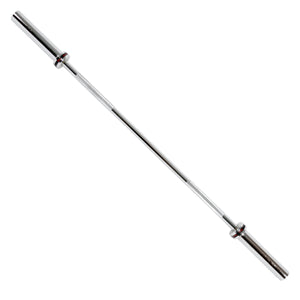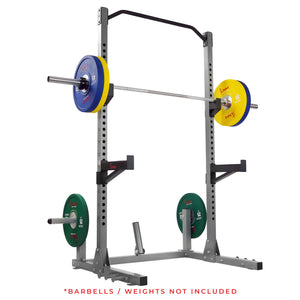Workouts getting boring? Is “Three Sets of Ten with 60 Seconds Rest” getting you down?
Supersets and superset workouts may be the solution. But what is a superset? In this article, we’ll learn all about different types of supersets and how to organize your very own superset workouts. Let’s jump in!
A superset simply means you perform a set of one exercise followed by a set of another exercise without resting in between. It is a technique that increases overall exertion levels and heart rate, so you burn more calories during your workouts and increase your total work capacity. Additionally, supersets and superset workouts save time, so you can spend less time in the gym.
Superset workouts become especially useful after you’ve been working out for six months or more. But why wait? Because it’s important to learn good form on your exercises before you start trying to move through them more quickly.
Supersets for Resistance Training
These superset structures are designed to allow for optimal performance and progressive overload, so you won’t see two exercises in a row that work exactly the same muscle (e.g. Barbell Biceps Curl followed by Incline Dumbbell Curls) because that would hinder these objectives. But feel free to experiment!
Lower/Upper
A Lower/Upper superset is simply a lower-body exercise followed by an upper-body exercise without resting in between. An example is a Goblet Squat followed by a Dumbbell Overhead Press. You could also put the upper-body exercise first, depending on preference.
Opposite-Muscle Supersets
Also known as “Antagonistic” supersets, an Opposite-Muscle Superset means that the first exercise works one muscle while the other works its “opposite.” Here is a quick list of muscle groups and their opposites (and it applies in both directions):
| THIS muscle: | Is the opposite of THIS muscle (and vice versa) |
|---|---|
| Quadriceps | Hamstrings |
| Biceps | Triceps |
| Chest | Upper Back |
| Abdominals | Lower Back |
| Shoulders | Latissimus Dorsi |
| Front Deltoid | Rear Deltoid |
Sometimes there is crossover: a barbell squat works both the quads and the hamstrings, doesn’t it? But the quadriceps are the dominant muscle in the exercise. If you’re not sure, just focus on which muscle gets the most tired during the exercise. That’s the dominant muscle!
Opposite-Movement Supersets
Like Opposite-Muscle supersets, Opposite-Movement supersets pair exercises with opposing movement patterns. Here’s the breakdown:
| THIS Movement pattern | Is the opposite of THIS muscle (and vice versa) |
|---|---|
| Horizontal Push (bench press) | Horizontal Pull (rows) |
| Vertical Push (Overhead press) | Vertical Pull (pullup) |
| Squats | Deadlifts |
| Abs | Lower Back/Glutes |
Some examples of this type of superset include Barbell Back Squats followed by Romanian Deadlifts, Barbell Rows followed by Pushups, or Sit-ups followed by Bench Reverse Hypers (an amazing exercise, by the way!).
Compound/Core
The phrase “compound exercises” refers to any exercise that involves more than one joint movement, whereas single-joint movements are often called isolation movements. Here is a list of all the compound movements that we are concerned with:
|
Squat/Lunge |
|
Deadlift |
|
Bench Press/Pushup |
|
Overhead Press |
|
Row |
|
Pullup |
|
Dip |
A compound/core superset pairs a multi-joint lift followed by a core exercise. The beauty of this type of superset is that you can decently rest from the compound lift while also sneaking in your core training. If your main goal is pure strength, though, you might want to use this superset only during your warmup sets.
Here are the main core movement patterns that we’re concerned with.
|
Crunch/Sit-up |
|
Plank |
|
Leg Raise |
|
Rollout |
|
Trunk Rotation |
|
Glute Bridge/Hip Thruster |
So, a good example of Compound/Core supersets would be Walking Lunges and Planks, Deadlifts and Hanging Leg Raises, Bench Press and Glute Bridges, or Overhead Press and Rollouts. If you choose to include the glute bridge, you probably want to pair it with an upper-body compound movement to avoid detracting from performance on things like squats and deadlifts. But some people find the opposite is the case, so try it!
Synergistic
A Synergistic superset works muscles that often help each other in the same movement. For example, during any compound pushing movement, like a bench press or overhead press, the chest, shoulders, and triceps muscles are all being utilized to some degree. These muscles are considered “synergistic” for this reason. So, supersetting a Bench Press followed by an Overhead Triceps Extension would be considered Synergistic, as would a Squat followed by an RDL. As you can see, Synergistic Supersets are great for incorporating isolation exercises.
| Movement Pattern | Muscles Involved |
|---|---|
| Push | Chest, Triceps, Shoulders |
| Pull | Upper Back, Mid-Back (lats), Biceps |
| Squats | Quadriceps, Hamstrings, Glutes, Lower Back |
| Deadlift | Hamstrings, Lower Back, Glutes, Quadriceps |
Some good Synergistic examples would be Squat followed by Hip Thrusters, Bench Presses followed by Overhead Triceps Extensions, or Overhand Pullups followed by Curls.
Supersets for Cardio
Cardio supersets can just be two random cardio exercises, one after the other. But sometimes it helps if the two exercises make sense together, both for peace of mind and for results. So, in this section, we’ll discuss how to design superset workouts for cardio that make sense. Sound good? Okay, let’s go!
The first thing to understand is that there are really two ways to measure cardio exercise: with distance or with effort.
Distance is measured, of course, by how MUCH of it you do. Effort is measured by how HARD it is to do.
| This exercise is best for distance-based cardio | This exercise is best for effort-based cardio |
|---|---|
| Treadmill | Slamball slams |
| Bike | Battleropes |
| Rower | Sled pushes/pulls |
| Elliptical | Burpees |
| Stepper | Kettlebell Swings |
It is possible to increase the Effort of the exercises on the left, though. On the treadmill, increase the speed and incline, or put on a weighted vest. Boom! Instantly more effort is required. Similarly, you can increase the Distance of the exercises on the right. Just do more reps and do them for longer! It’s up to you to decide!
Distance/Effort or Effort/Distance Supersets
These types of superset pair a distance-based exercise like the treadmill with an effort-based exercise like Slamball slams. Each style has its advantages and disadvantages but mainly you should use the order you prefer!
Distance/Distance Supersets
Following one Distance-based exercise with another is mainly common in athletes training for multi-disciplined race events such as triathlons, but you can certainly experiment! Try going high intensity on the first one, like the rower, and then sustain a lower pace for a longer period on the second one, like the bike.
Effort/Effort Supersets
These are somewhat more common among recreational athletes. Pair one Effort-based exercise like the Sled Push with another Effort-based exercise like the Burpee. They’re super-challenging and really built mental toughness, so start slow, push yourself, and enjoy the sweat!
Cardio/Resistance Training Supersets
Supersetting cardio exercise with resistance training is a great way to check both boxes in a short amount of time. The only caveat is, try to pair lower-body with upper-body and vice versa. So, if you’re doing Squats, pair them with Battleropes or the Rower. If you’re doing Bench Pressing, pair it with running, box jumps, or kettlebell swings. It’s easier to progress, safer, and generally, more fun!
How To Decide Which Supersets to Use?
The purpose of this article is to give you ideas. It’s good to be “optimal,” and it would be great to be “perfect,” but at the end of the day, whatever keeps you motivated and focused is probably the best choice. You want your superset workouts to be comprehensive, challenging, and timesaving, but ideally, they should also be fun. If you’re just starting out with supersets, don’t worry about choosing “the right one” right off the bat. Just pick one, select some exercises, and give it a try.
And if you like it, keep doing it!
How to Organize a Superset Workout
The main thing to remember when using supersets is.... DON’T REST BETWEEN EXERCISES! If you do, it defeats the point. If you’re trying to save time with supersets, you also need to be conscious not to rest extra-long BETWEEN supersets because this will have the same effect.
That said, supersetting exercises will invariably be more challenging than doing them one at a time. If you find yourself getting extremely winded and needing extra rest, the only thing you did wrong was start with a little too much intensity. Shorten the run or the set for now, or reduce the weight a little, and then in a few weeks, you’ll be able to increase it again.
Stay Super!

Mark Ludas CPT is a NASM-certified personal trainer with a decade of experience in the fitness industry. After an asthmatic childhood, Mark discovered his natural aptitude for fitness in his late twenties. At age 36, he accomplished a 300+ pound conventional deadlift and 280+ high-bar squat as a 6’5” 170-pound ectomorph on a fully vegan diet, all after just one year of proper self-programming. Mark is the founder of Resistance Quest Fitness, established in 2016. Additionally, he is a writer, actor, model, and musician. Find him on Instagram, Facebook, Youtube, and at www.resistancequest.com.

























Add Your Name & Email
Please enter your name and email to continue.We won’t display your email publicly.